Vision loss is overwhelming enough for patients. Add the huge amount of products, technology and equipment that is available for the blind and low vision community, and it’s choice paralysis.
Here are 10 of the common tools Vision Australia recommends newly diagnosed patients after a health professional referral.
1. Magnifiers
Magnifiers come in a variety of forms. From the basic handheld glass magnifier to electronic versions that can zoom in with the click of a button.
Some can be used like overhead projectors to help someone read the newspaper.
Free options also include the app Zoom on an iPhone (which magnifies 1500% by using the smartphone’s camera).
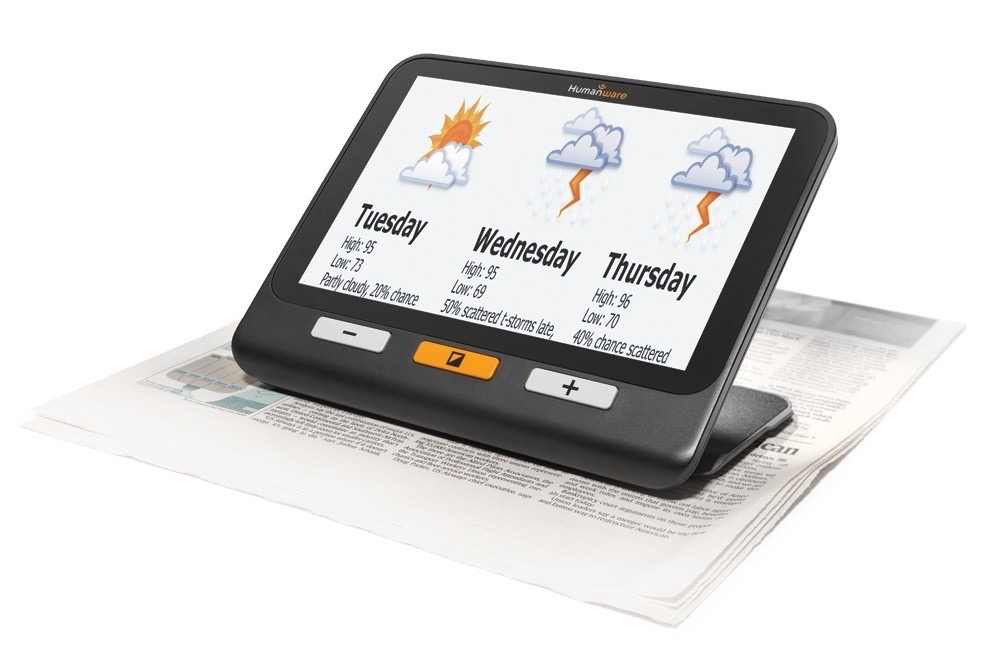
Pictured: Electronic explorē 8 magnifier
2. Canes
Mobility canes, or white canes, come in all shapes and sizes to help people detect obstacles, keep balance and know the height of steps and down drops. They are a cost effective, easy to use solution and takes a few hours of training.
An ID cane is designed to be a visible signal to others that the user is blind or has low vision.
A support cane has more in common with a walking stick, and can be used to aid balance and as a means of physical support. Another idea is a small low vision badge, which can be pinned to clothing to clearly inform others that the wearer has low vision.
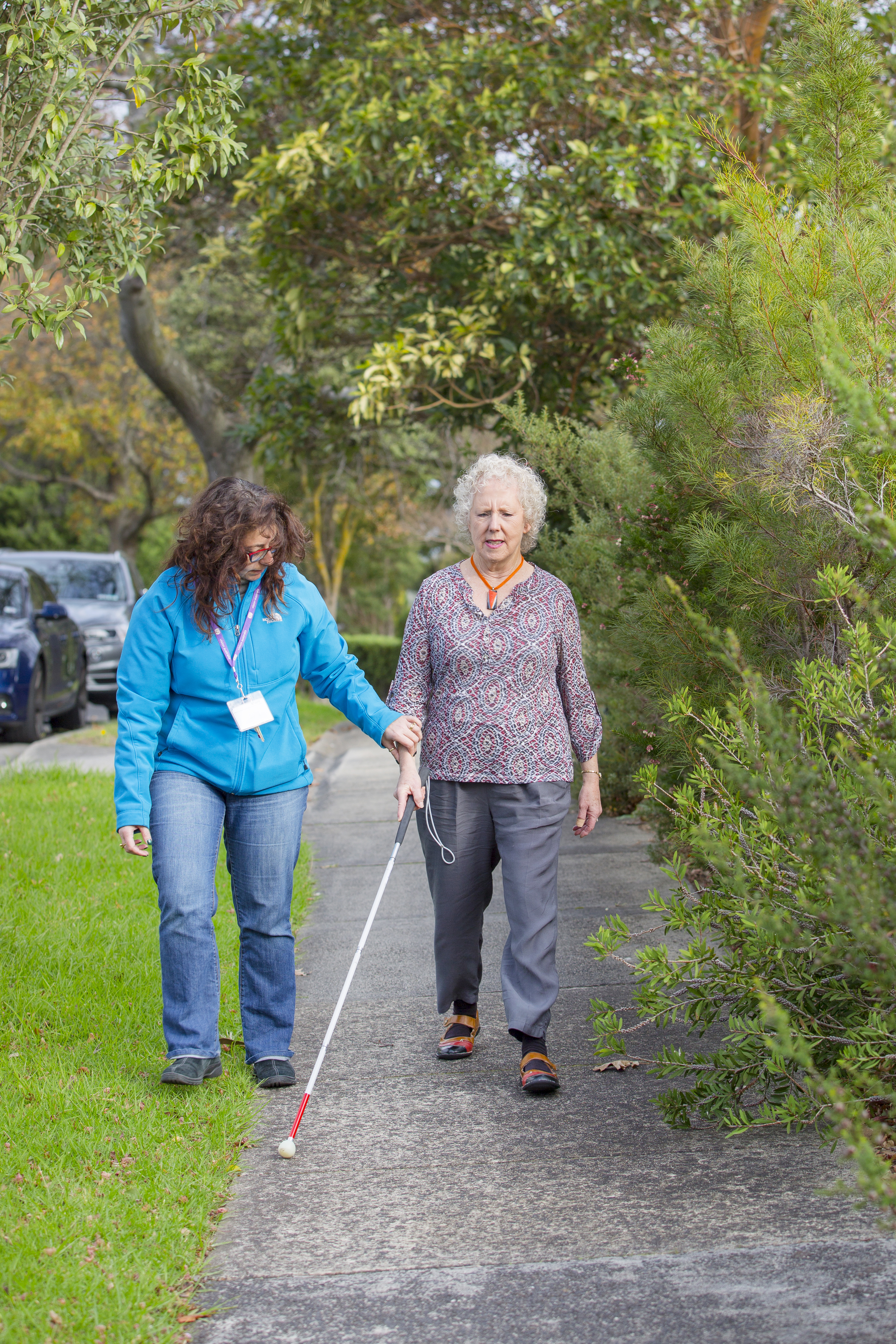
Pictured: June learning to use a white cane.
3. Dots
Basic stickers and tactile makers can help someone with a vision condition identify their favourite microwave setting, temperature on the oven or even wash cycle on their dishwasher. They work by giving a tactile indicator on common buttons where patients feel for the bump to orientate themselves.
It’s advised that health professionals refer the patient to an occupational therapist, who is skilled in assessing how someone can still use every room in their house, can advise on the right equipment and supports.
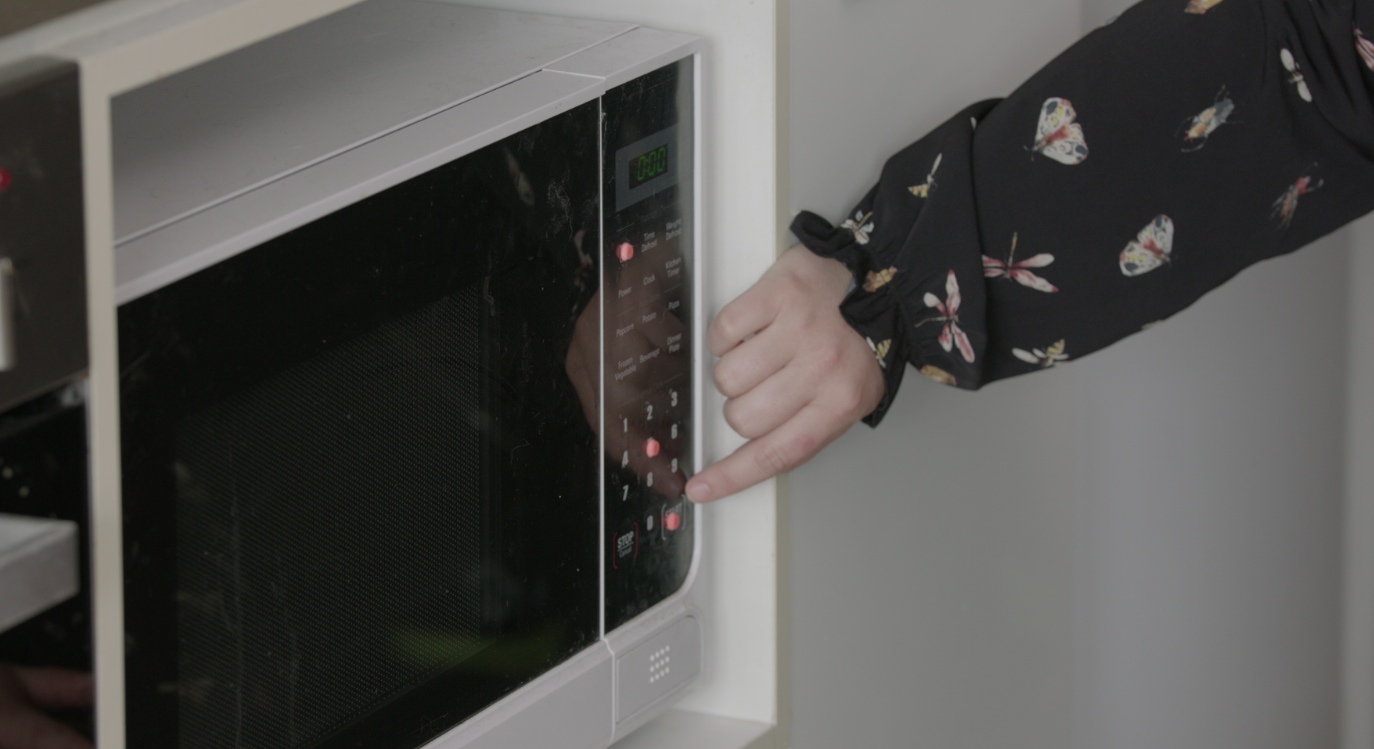
Pictured: Stickers on a touch screen microwave.
4. Large print phones/keyboard
Patients with low vision can benefit from large print aids and technology. Some of the most popular items are the large print phones, calendars and large print keyboards.
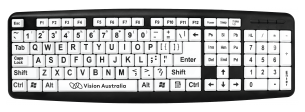
Pictured: Large print keyboard with white keys.
5. Alexa or Google Home
Electronic personal assistants like the Amazon Alexa and the Google Home are hands free, voice activated devices that vocalise information back to you.
Many people who are blind or have low vision use these speakers to hear the time, check the weather, hear the headlines and listen to the radio.
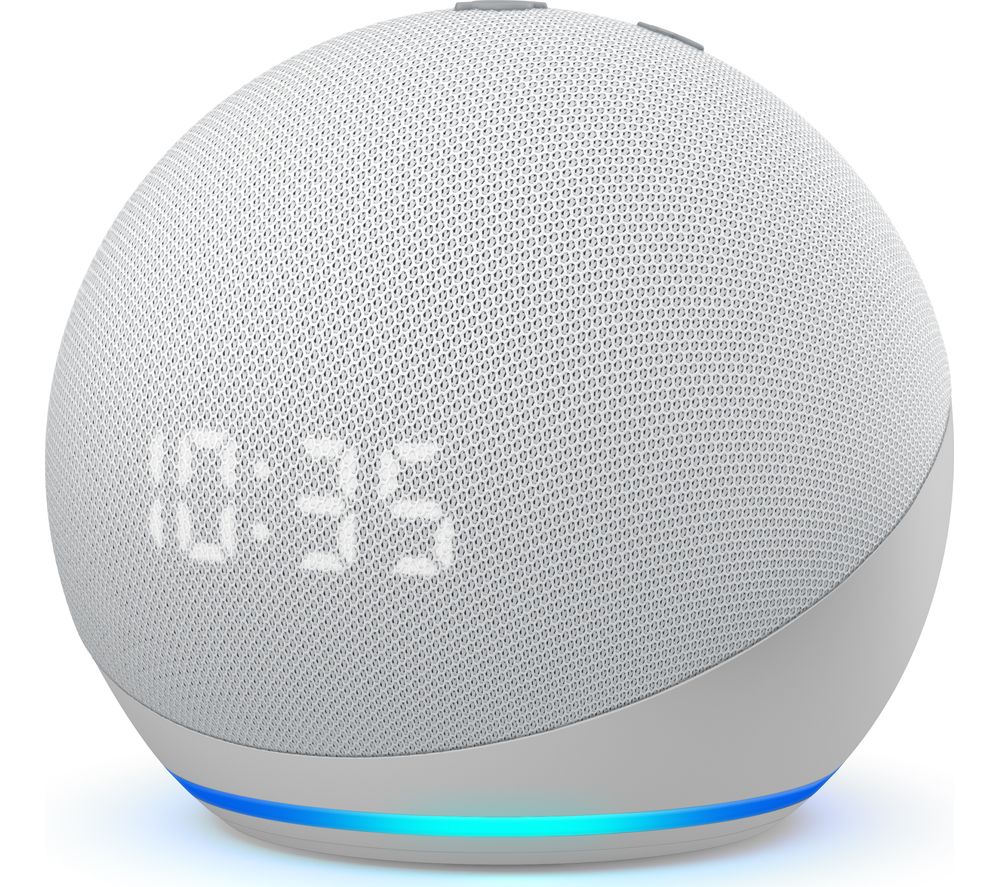
Pictured: Amazon echo dot
6. Seeing AI
A hugely useful free app for patients with a smartphone. This free app uses the phone’s camera and vocalises anything it can see. It speaks text as soon as it appears in front of the camera; scans barcodes, uses audio beeps to guide the user; describes an overall scene; identifies colours, reads handwritten text like in greeting cards; saves people’s faces so it can recognise them.
See more on the best apps for blind and low vision patients.
7. Liquid level Indicator
A small win like making a cup of tea or coffee after vision loss is a huge step towards independence. An audible liquid level indicator chimes or vibrates when the water gets to the top of the cup. It helps avoid spillage.
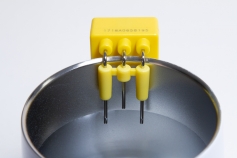
Yellow Liquid Level Indicator
8. Screen readers
A screen reader allows people who are blind or have low vision to use their computer or device. It uses a synthesised, robotic voice to read out loud the text and items on a screen.
This software is available already installed on smartphones (VoiceOver on IPhone, Talkback on Android) but can also be downloaded on a computer for free or at cost. Most blind computer users like JAWS screen reader, but a free option is NDVA.
9. Stencil to sign name
Get your patients writing confidently with a plastic signature guide. It gives them a tactile object to assist them staying in the lines. Also available in A4 size with ruled lines.
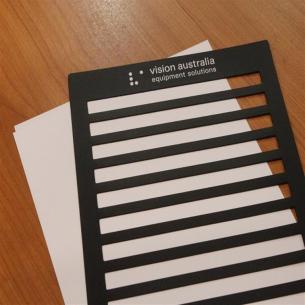
Plastic writing guide on A4 page.
10. Vision Australia library
Australia’s largest audio library is available free to people who are blind or have low vision or have a print disability. For your patient to access it, you will need to refer them to Vision Australia.
From the local paper to a best seller delivered via a smart phone app or MP3 player.
If your patient is new to vision loss, it’s important they are introduced to the equipment and assistive technologies that truly support their needs.
If you feel your patient would benefit from any of these supports, our specialist staff will be able to assess their needs and goals and suggest what’s right for them.
For more information, call 1300 847 466 or visit visionaustralia.org/referral










